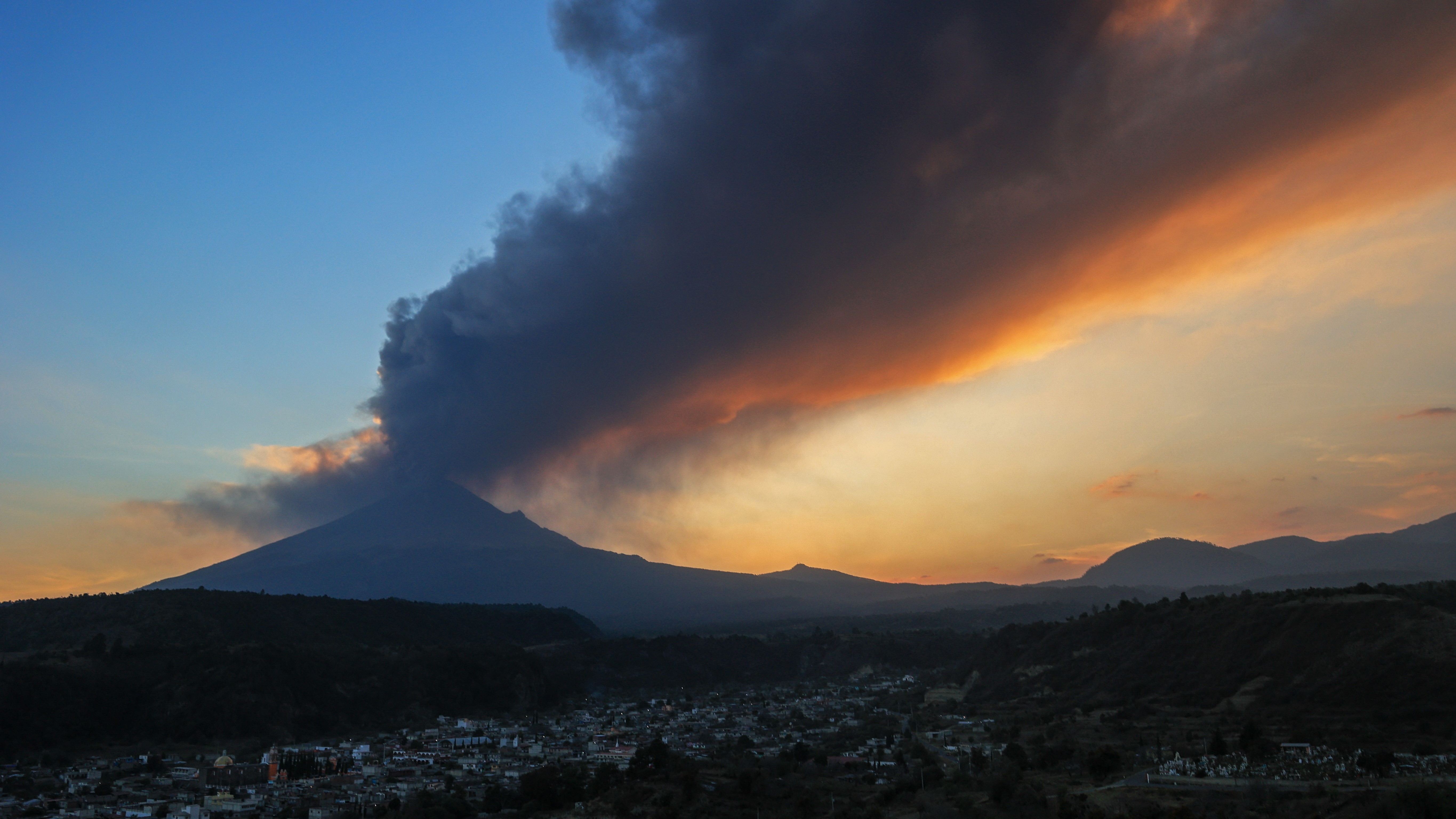Mexico's most dangerous active volcano erupts 13 times in 1 day
The Popocatépetl volcano, just outside Mexico City, has been spewing thick plumes of volcanic ash into the sky, causing flights to be grounded.

Mexico's most dangerous active volcano has erupted 13 times in the past day, hurling columns of ash and smoke into the sky. The volcanic activity is disrupting flights in the area and prompted officials to warn people not to climb the volcano.
Popocatépetl — which means "smoking mountain" in the Aztec Nahuatl language — is located in central Mexico roughly 45 miles (72 kilometers) southeast of Mexico City. It has been blanketing the capital and the surrounding area with thick plumes of ash since Tuesday (Feb 27.).
Popocatépetl has cycled through periods of activity and dormancy for the last half a million years, with its last major eruption taking place more than a thousand years ago. The current active phase began in 1994.
Around 25 million people live in a 60-mile (96 km) radius of the volcano, but officials monitoring its activity do not believe the eruptions pose any immediate risk to inhabitants — provided they keep their distance.
Related: 'It is not very wise to spend the night in Grindavík': Iceland volcano gears up for another eruption
"Do not try to climb the volcano, as explosions occur that throw incandescent fragments, as has been seen recently. Respect the exclusion radius of 12 kilometers [7.5 miles] from the crater, being within this area is not safe. In case of heavy rain, stay away from the bottom of ravines due to the danger of mud and debris flows," Mexico's National Center for the Prevention of Disasters (CENAPRED) wrote in a translated alert on Tuesday (Feb 27.).
Some of this ash was found inside planes at Mexico City's Benito Juárez International Airport, leading to the cancellation of at least 22 flights, according to airport officials. The ash cloud has also led to the temporary closure of Puebla International Airport, which is located close to the volcano. If the plumes continue, officials from the airport warned on Wednesday (Feb 28.) that "operations could be suspended."
Get the world’s most fascinating discoveries delivered straight to your inbox.
Volcanic ash is dangerous for planes because it severely reduces visibility and its abrasive texture can erode the blades within a jet engine. In addition, tiny glass particles within the ash can melt and become sticky upon contact with the engine's combustion chamber.
"Airborne volcanic ash can be a serious hazard to aviation even hundreds of miles from an eruption," the American Geosciences Institute wrote in a blog post. "When ingested into a jet engine, volcanic ash erodes turbine blades, and the melted ash can adhere to critical parts, causing engine failure."

Ben Turner is a U.K. based writer and editor at Live Science. He covers physics and astronomy, tech and climate change. He graduated from University College London with a degree in particle physics before training as a journalist. When he's not writing, Ben enjoys reading literature, playing the guitar and embarrassing himself with chess.


